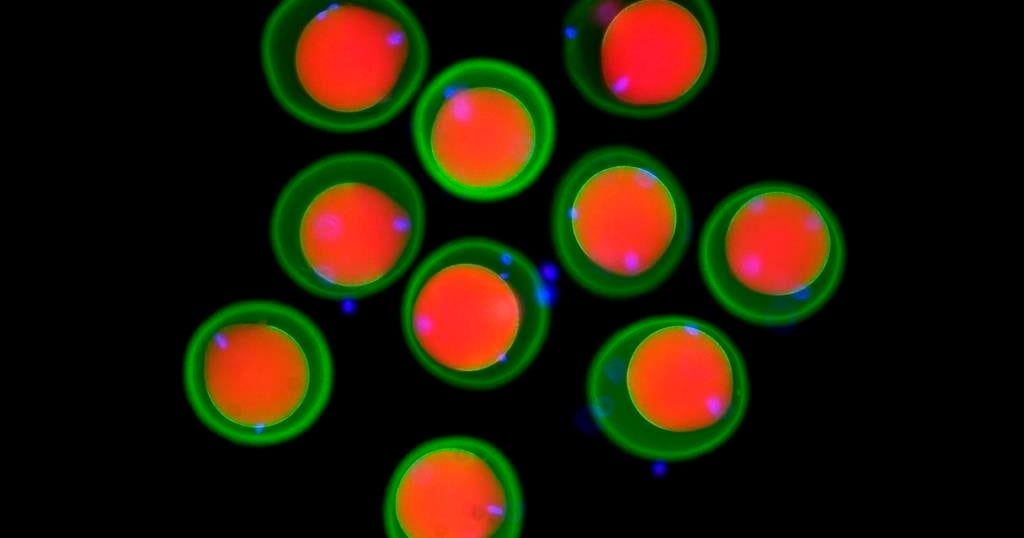A new case of COVID-19 has been reported in B.C. from a woman who returned this week from Iran.
Health
B.C. woman diagnosed with COVID-19 after returning from Iran – Canada.com

B.C.’s health officials are set to share an update on novel coronavirus.
Another case of the coronavirus has been diagnosed in British Columbia.
The provincial health officer, Dr. Bonnie Henry, says a woman in her 30s has been diagnosed with COVID-19 after returning this week from Iran. The woman lives in the Fraser Health region.
“Our continued view is that the risk to B.C. is low, we are acting with vigilance,” she said.
Henry said staff were surprised by a new case linked to Iran, which only recently reported it had five cases of COVID-19 and two deaths.
“That could be an indicator that there’s more widespread transmission. This is what we call an indicator or sentinel event,” Henry said during a Thursday news conference.
“That triggered interest from people around the world,” Henry said. “I expect there will be an investigation to determine where the exposure occurred.”
Iran has reported at least 20 other people in various areas who are being tested, Henry said. “And we’ll be linking with them to see where this person had been in Iran — we’re tracing her travel all the way back to Iran.”
Henry says the woman’s case is relatively mild and a number of her close contacts are in isolation.
B.C. Health Minister Adrian Dix said the patient’s samples have been sent to the National Microbiology Laboratory in Winnipeg, Man., for final confirmation.
This brings the number of cases of COVID-19 in B.C. to six.
“So far in B.C. all of our cases have been relatively mild and managed mostly at home,” she said.
Henry said earlier that four of the five people diagnosed with the virus were symptom free.
The fifth person, a woman in her 30s who returned from Shanghai, China, is in isolation at her home in B.C.’s Interior.
Henry said over 500 people have been tested for the virus in B.C. and many of those tested positive for the flu.
“We’re in containment,” she explained, adding that because many cases are mild, the virus can apparently be transmitted when people have few symptoms.
“It makes it very difficult to contain the virus. We’re not out of the woods yet.”
Three cases of the virus have also been confirmed in Ontario.
As of Thursday, the World Health Organization said there were 76,214 confirmed cases globally, with 548 new cases reported in the past 24 hours. The majority of those cases are in China, with 2,121 deaths recorded to date in the country.
Outside of China, there have been eight deaths across 26 countries. In Canada, there have only been nine cases to date, with only one case being transmitted outside of China. There have been no deaths due to COVID-19 in Canada.
— With files from Lynn Mitges, Stephanie Ip, and the Canadian Press
Health
Whooping cough is at a decade-high level in US

MILWAUKEE (AP) — Whooping cough is at its highest level in a decade for this time of year, U.S. health officials reported Thursday.
There have been 18,506 cases of whooping cough reported so far, the Centers for Disease Control and Prevention said. That’s the most at this point in the year since 2014, when cases topped 21,800.
The increase is not unexpected — whooping cough peaks every three to five years, health experts said. And the numbers indicate a return to levels before the coronavirus pandemic, when whooping cough and other contagious illnesses plummeted.
Still, the tally has some state health officials concerned, including those in Wisconsin, where there have been about 1,000 cases so far this year, compared to a total of 51 last year.
Nationwide, CDC has reported that kindergarten vaccination rates dipped last year and vaccine exemptions are at an all-time high. Thursday, it released state figures, showing that about 86% of kindergartners in Wisconsin got the whooping cough vaccine, compared to more than 92% nationally.
Whooping cough, also called pertussis, usually starts out like a cold, with a runny nose and other common symptoms, before turning into a prolonged cough. It is treated with antibiotics. Whooping cough used to be very common until a vaccine was introduced in the 1950s, which is now part of routine childhood vaccinations. It is in a shot along with tetanus and diphtheria vaccines. The combo shot is recommended for adults every 10 years.
“They used to call it the 100-day cough because it literally lasts for 100 days,” said Joyce Knestrick, a family nurse practitioner in Wheeling, West Virginia.
Whooping cough is usually seen mostly in infants and young children, who can develop serious complications. That’s why the vaccine is recommended during pregnancy, to pass along protection to the newborn, and for those who spend a lot of time with infants.
But public health workers say outbreaks this year are hitting older kids and teens. In Pennsylvania, most outbreaks have been in middle school, high school and college settings, an official said. Nearly all the cases in Douglas County, Nebraska, are schoolkids and teens, said Justin Frederick, deputy director of the health department.
That includes his own teenage daughter.
“It’s a horrible disease. She still wakes up — after being treated with her antibiotics — in a panic because she’s coughing so much she can’t breathe,” he said.
It’s important to get tested and treated with antibiotics early, said Dr. Kris Bryant, who specializes in pediatric infectious diseases at Norton Children’s in Louisville, Kentucky. People exposed to the bacteria can also take antibiotics to stop the spread.
“Pertussis is worth preventing,” Bryant said. “The good news is that we have safe and effective vaccines.”
___
AP data journalist Kasturi Pananjady contributed to this report.
___
The Associated Press Health and Science Department receives support from the Robert Wood Johnson Foundation. The AP is solely responsible for all content.
The Canadian Press. All rights reserved.
Health
Scientists show how sperm and egg come together like a key in a lock

How a sperm and egg fuse together has long been a mystery.
New research by scientists in Austria provides tantalizing clues, showing fertilization works like a lock and key across the animal kingdom, from fish to people.
“We discovered this mechanism that’s really fundamental across all vertebrates as far as we can tell,” said co-author Andrea Pauli at the Research Institute of Molecular Pathology in Vienna.
The team found that three proteins on the sperm join to form a sort of key that unlocks the egg, allowing the sperm to attach. Their findings, drawn from studies in zebrafish, mice, and human cells, show how this process has persisted over millions of years of evolution. Results were published Thursday in the journal Cell.
Scientists had previously known about two proteins, one on the surface of the sperm and another on the egg’s membrane. Working with international collaborators, Pauli’s lab used Google DeepMind’s artificial intelligence tool AlphaFold — whose developers were awarded a Nobel Prize earlier this month — to help them identify a new protein that allows the first molecular connection between sperm and egg. They also demonstrated how it functions in living things.
It wasn’t previously known how the proteins “worked together as a team in order to allow sperm and egg to recognize each other,” Pauli said.
Scientists still don’t know how the sperm actually gets inside the egg after it attaches and hope to delve into that next.
Eventually, Pauli said, such work could help other scientists understand infertility better or develop new birth control methods.
The work provides targets for the development of male contraceptives in particular, said David Greenstein, a genetics and cell biology expert at the University of Minnesota who was not involved in the study.
The latest study “also underscores the importance of this year’s Nobel Prize in chemistry,” he said in an email.
___
The Associated Press Health and Science Department receives support from the Howard Hughes Medical Institute’s Science and Educational Media Group. The AP is solely responsible for all content.
The Canadian Press. All rights reserved.
Health
Turn Your Wife Into Your Personal Sex Kitten


Product Name: Turn Your Wife Into Your Personal Sex Kitten
All orders are protected by SSL encryption – the highest industry standard for online security from trusted vendors.

Turn Your Wife Into Your Personal Sex Kitten is backed with a 60 Day No Questions Asked Money Back Guarantee. If within the first 60 days of receipt you are not satisfied with Wake Up Lean™, you can request a refund by sending an email to the address given inside the product and we will immediately refund your entire purchase price, with no questions asked.
-

 News22 hours ago
News22 hours agoCanadanewsmedia news October 18, 2024: Testy B.C. election campaign reaches final day
-

 News22 hours ago
News22 hours agoUS to probe Tesla’s ‘Full Self-Driving’ system after pedestrian killed in low visibility conditions
-

 News22 hours ago
News22 hours agoAdvocates urge Ontario to change funding for breast prostheses, ostomy supplies
-

 News22 hours ago
News22 hours agoMore details expected on proposed deal that would see tobacco giants pay billions
-

 News22 hours ago
News22 hours ago‘Kindness’ influencers on TikTok give money to strangers. Why is that controversial?
-

 News22 hours ago
News22 hours agoHousing, health, and plastic straws: Here’s how B.C. politicians are wooing voters
-

 News22 hours ago
News22 hours agoTesty B.C. election campaign sees leaders attacking each other more than policy
-

 News22 hours ago
News22 hours agoRwanda shrugs off ‘sportswashing’ criticism in pursuit of a winning development formula





















